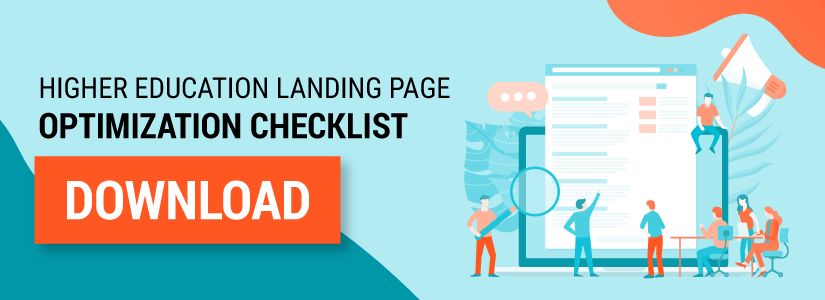Written By:
Eric Bakken
It's becoming increasingly important for higher education institutions to find effective ways to reach potential students. According to the Education Data Initiative, the number of total enrolled postsecondary students declined 3.29% year-over-year in 2022—the most significant rate of decline in enrollment since 1951. As a result, paid media has become an invaluable tool in trying to reverse these trends, allowing schools to target prospective students on multiple channels with relevant and tailored messaging.
This article will cover:
- What paid media is
- How to leverage paid search, paid social, and remarketing ads for higher education
- How you can start paid efforts for your college
What Is Paid Media?
Paid media is an excellent tool for institutions to obtain new leads for their admissions team to nurture. It's a means of promoting your advertisements on search engine results pages (SERPs), social media platforms, and more.
Before you begin using paid media, it's critical to have your admissions funnel in place. That way your paid media efforts can help guide prospective students through the funnel to matriculation.
While paid media can be an incredibly useful tool in gaining new leads for your institution, it’s most effective when used in combination with other marketing efforts. For example, it can supplement existing organic traffic or be used as a substitute while organic content isn’t ranking.
You can integrate a paid media campaign into your existing funnel by leveraging your existing:
- Content: Blog posts, content offers, and videos can be used for paid social display ads
- Conversion Funnels: Landing pages, thank you pages, and workflows that use automated and personal outreach tactics to encourage users to take action
Interested in learning more? Below is an overview of the different types of paid media, and how each can effectively be used for higher education.
Ready to start advertising? Download our free landing page optimization checklist for higher education.
Paid Search In Higher Education
Paid search is one of the most popular forms of paid media that focuses on reaching your target audience as they are actively searching on search engines. The main objective of paid search is to show your advertisements at the top of search results for relevant searches.
How to Choose a Platform
Today’s most popular platform for paid search is Google Ads. This platform allows your advertisements to show up on search engine result pages when users search for targeted keywords. This means that when an individual stumbles across your ad, it’s more likely to be relevant to them and their search query.
Google Ads uses a pay-per-click (PPC) model to charge for advertisements. This means that you're charged for the advertisement based on the number of times they're actually clicked on. This can prevent you from wasting money on advertisements that won't produce any traffic.
Terms you can target include:
- Relevant keywords: If there are specific keywords relevant to your advertisement or offer, you can pay for your ad to show up on searches for those keywords.
- Competitors: You can pay for your advertisement to show up for your competitors' branded keywords, thus offering your programs as an alternative.
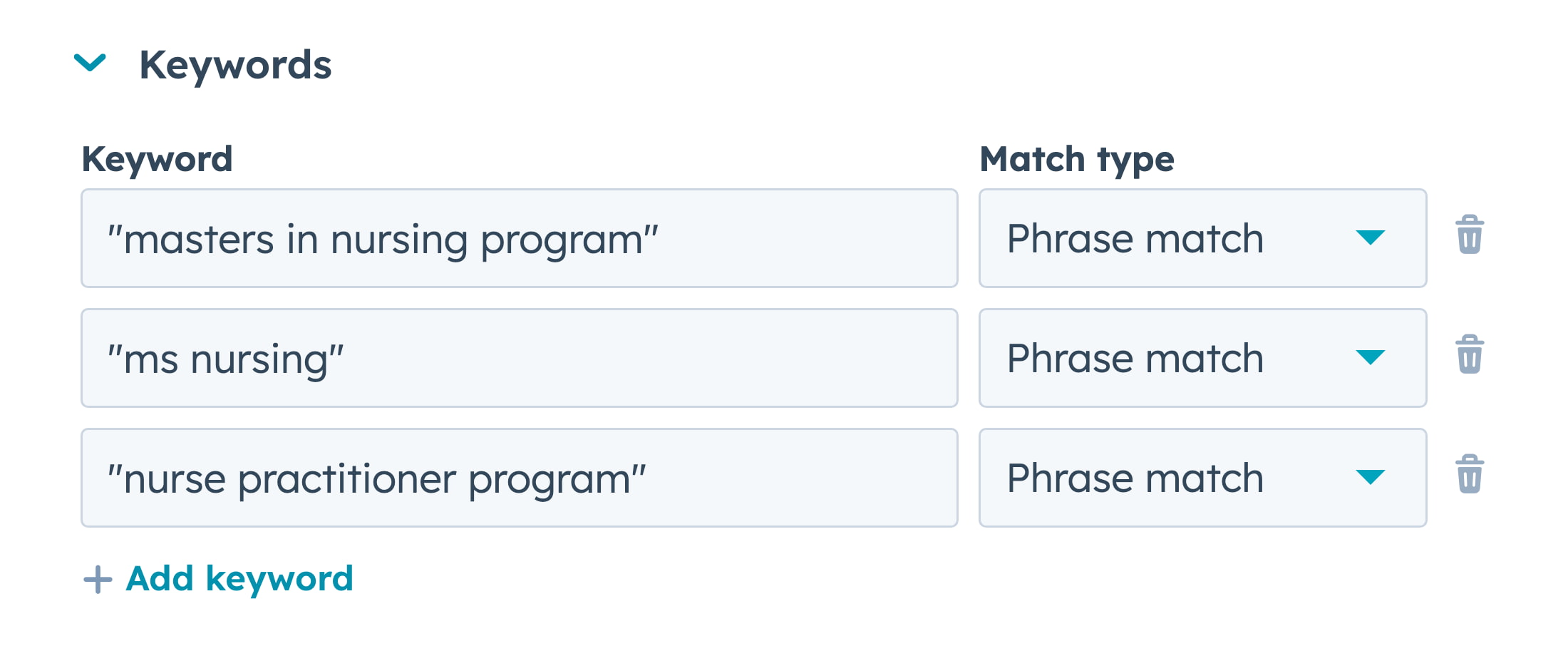
If you’re considering using this platform, it’s important to understand what type of students these ads are most effective for. Google ads is an excellent option for targeting individuals in the consideration and decision stages. According to HubSpot, users who have made a final decision and are ready to buy reportedly click on paid ads 65% of the time.
The purpose of paid search is to quickly gain new leads by reaching prospective students in your area who are actively researching programs, degrees, and universities. Google's targeting options, for example, allow you to specify:
- Demographics
- Location
- Student interests
- And more
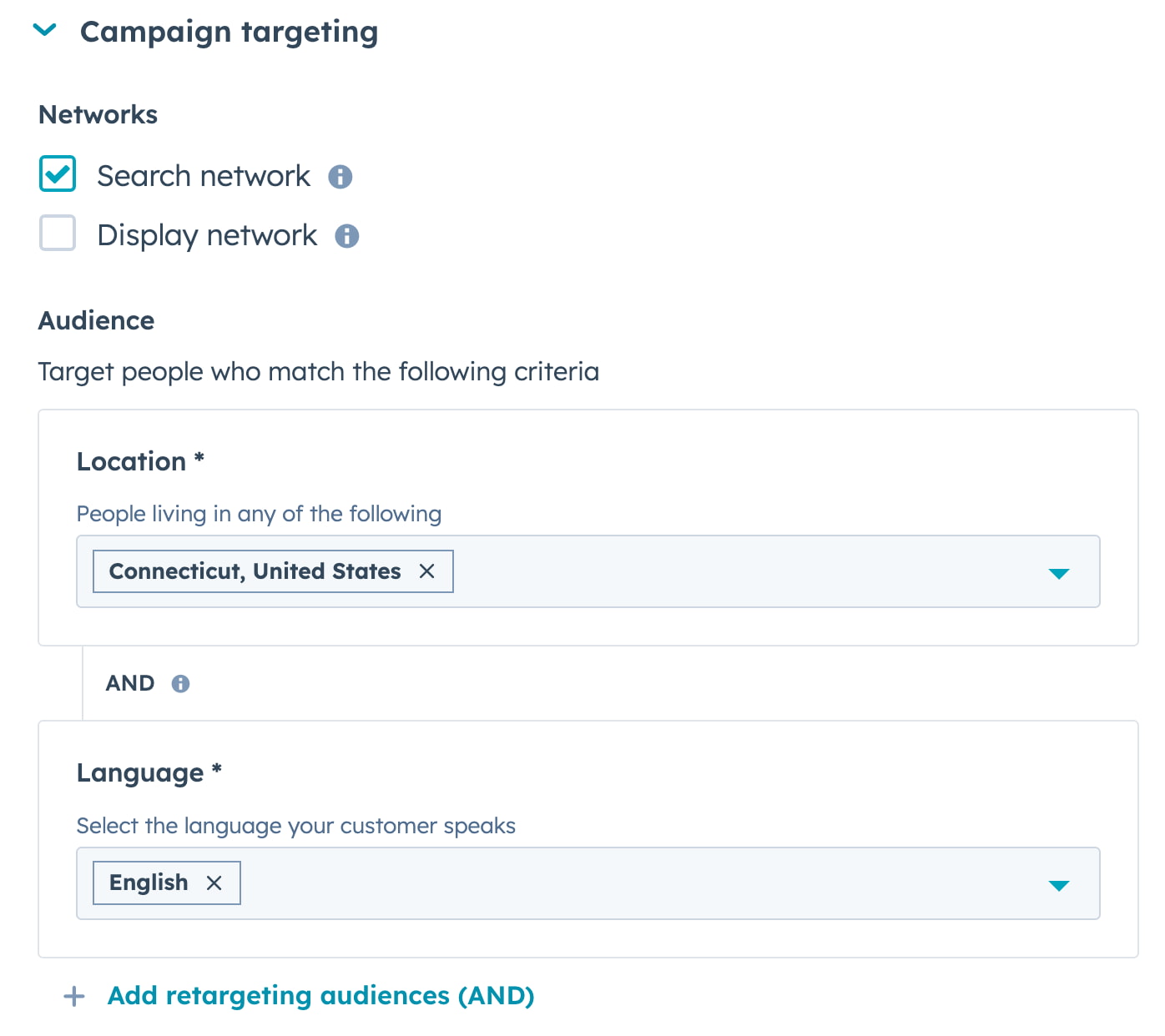
This allows you to display the most relevant advertisements to the right users, leading to more qualified leads for your admissions team.
How To Leverage Paid Search
A great way to leverage paid search is to promote your program in search results and encourage prospective students to take the next step by requesting information on your landing page.

Clicks can be expensive so it's important to ensure that your ads are relevant to your target audience. This is often accomplished by including a high-converting landing page.
Some examples of high-conversion content include:
- Sitelink extensions to promote admissions events links
- Apply now links
- Admissions counselor meeting links
You should also ensure your landing page encourages prospects to enroll in existing follow-up workflows for email nurturing. This helps the admissions team nurture the lead, which in turn increases the chances that the student will matriculate.
How to Create a Budget and Campaign Metrics
Just like most marketing efforts, it's always a good idea to set up your campaign with a preliminary budget to gain insight to the cost-per-acquisition (CPA)—the cost per new lead. Once you have this information, you can make an educated decision on setting a budget that meets your admission needs.
When planning your budget, it's important to make sure you know the cost-per-click (CPC) of your targeted keywords. While the average CPC across the education industry is $2.40, it's not unusual for the CPC to be significantly higher depending on your institution's location and the program you're advertising for. Therefore, it’s important you do thorough research for each campaign.
The primary goal for paid search ads is to gain new qualified prospective students. You'll use CPA as your primary conversion metric. To do this, you’ll want to create a Google Ads tag to track the form submission on the landing page. This helps you determine the value of a new lead based on the likelihood for them to deposit.
Since the average conversion rate for search ads in the education industry is 3.39%, it's important to use high-converting landing pages and compelling ad copy that aligns well with search and landing page content.
Paid Social In Higher Education
Social media is an excellent place to obtain leads organically and via paid media. According to the Pew Research Center, approximately 35% of teens use social media almost constantly. As a result, advertising on social channels allows you to bring prospective students to your website from social media networks.
How to Choose a Platform
There are several social media platforms that allow businesses to serve ads. Instagram and Facebook are great choices if you’re looking to reach prospective students seeking an undergraduate education, whereas LinkedIn is a good audience to test if you’re looking to reach professionals with specific job titles who may be in the market for a master's degree to advance their careers.
Paid Social Awareness Stage Ads
You can leverage paid social to reach an audience who is passively scrolling on the social media platform. These ads build awareness to prospective students while generating a list of warmer, qualified leads who have an interest in your programs which can then be used for retargeting.
Paid social allows for demographic targeting, such as limiting advertisements to only those within a certain radius of your institution, or only serving ads to those with a certain job title or within a specific age range. It also allows you to prevent your ads from being shown to those who have already converted.
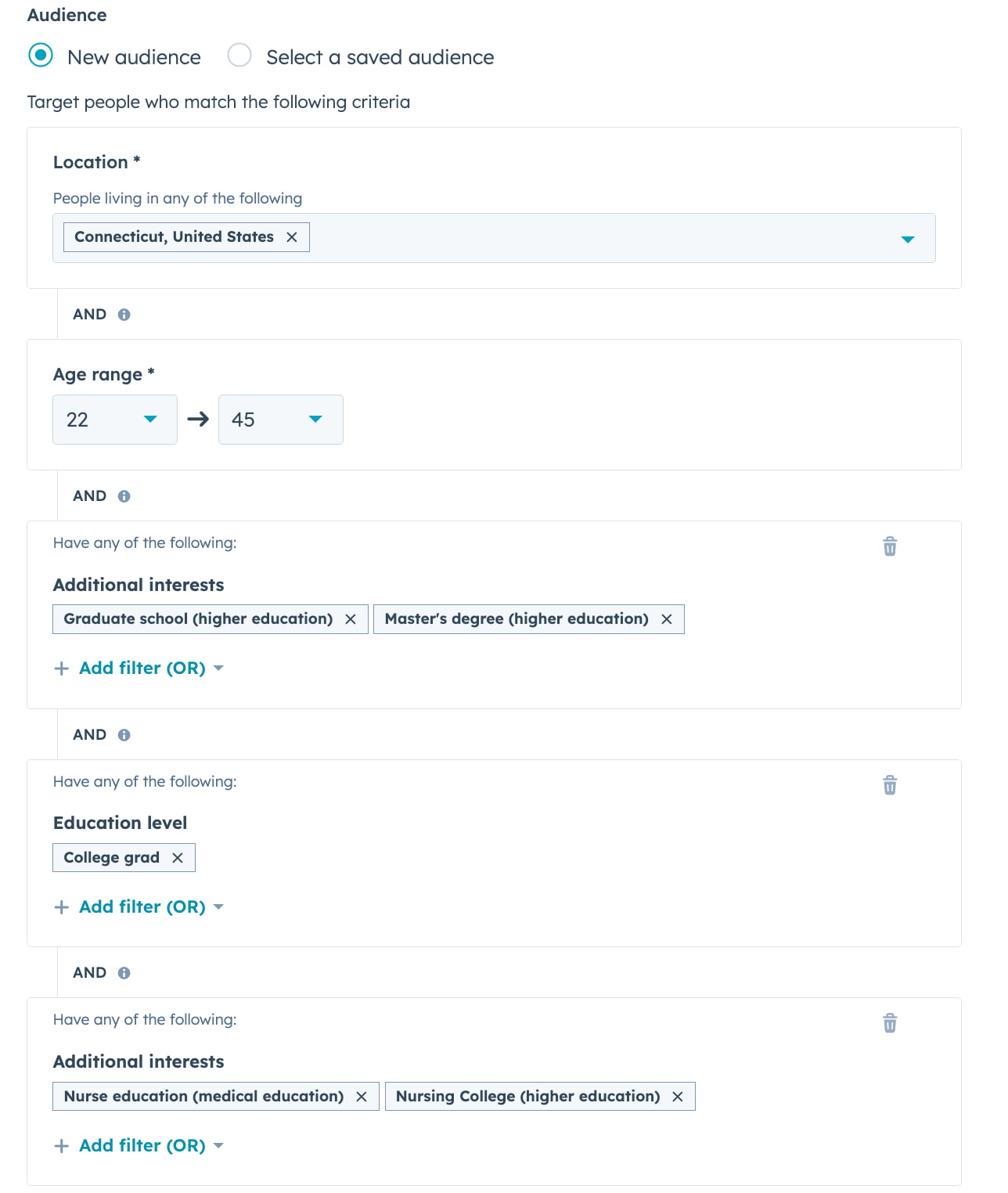
How To Leverage Paid Social For Awareness Stage Ads
Paid social allows you to promote your program or institution on social media feeds and encourage them to click the ad to visit your website for additional information.
One of the most effective types of ads to leverage on social media are display ads, which highlight relevant, engaging content in the feed with an accompanying image to capture prospects' attention. Display ads are a great way to highlight relevant content you've previously published on your blog. When using this tactic, it's vital to ensure that your blogs include CTAs to offer next steps to your prospects (e.g., downloading an offer, filling out a form requesting information, visiting a program page).
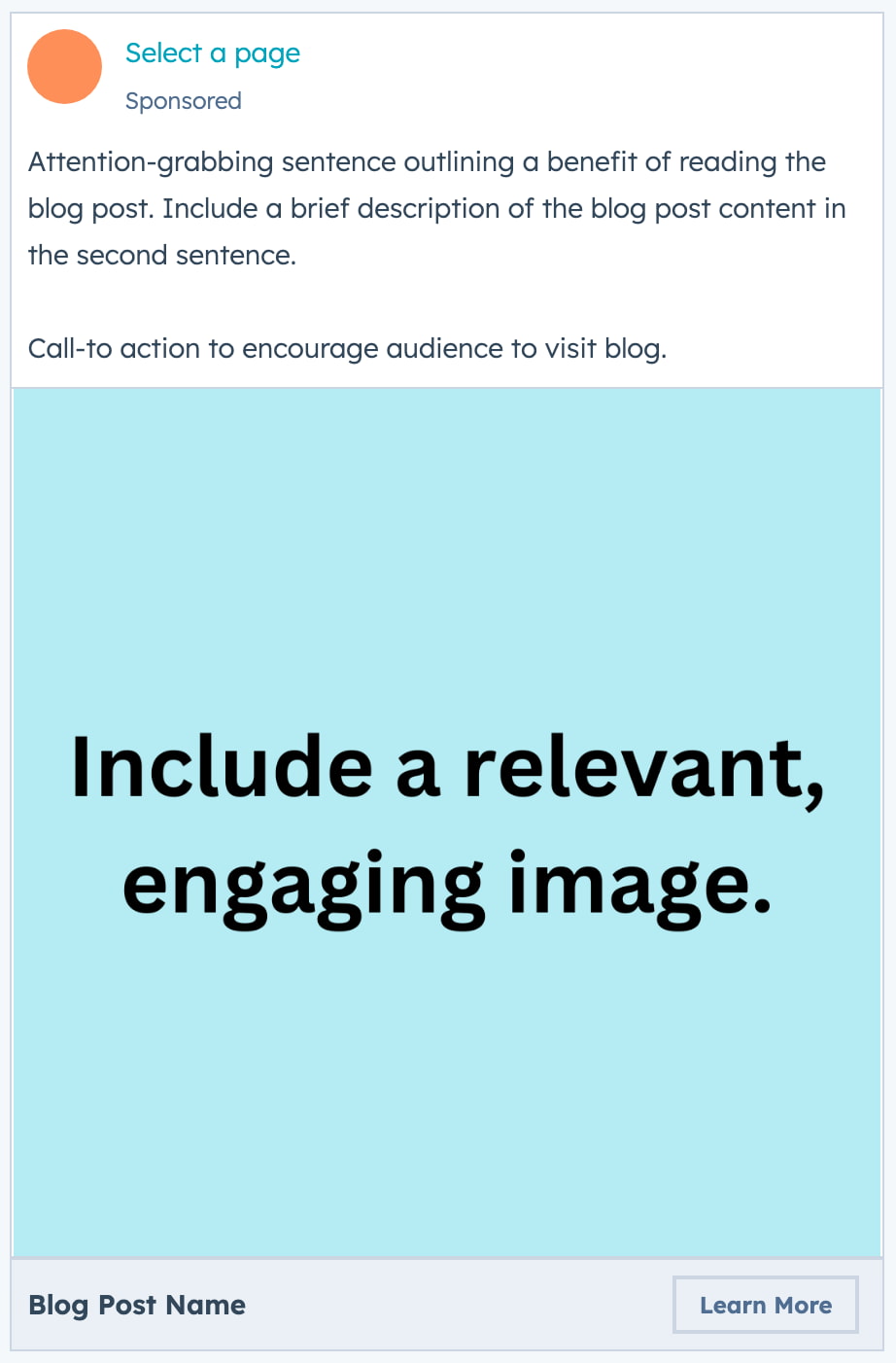
Paid Social For Lead Generation
Lead generation ads encourage users to trade their contact information for a content offer that they find valuable. Your school can target custom audiences or retargeting audiences who have expressed interest in your institution before—whether by visiting your website, filling out a form, or downloading an offer.
The objective is to reach a qualified audience and encourage them to provide their contact information in exchange for information they find valuable. This is a good opportunity to leverage your gated content and upcoming admissions events.
In addition to using demographics, behaviors, and location targeting, these platforms allow you to limit your advertisements to people who visited your website recently, or took a desired action. You can also prevent ads from showing to individuals who have already converted.
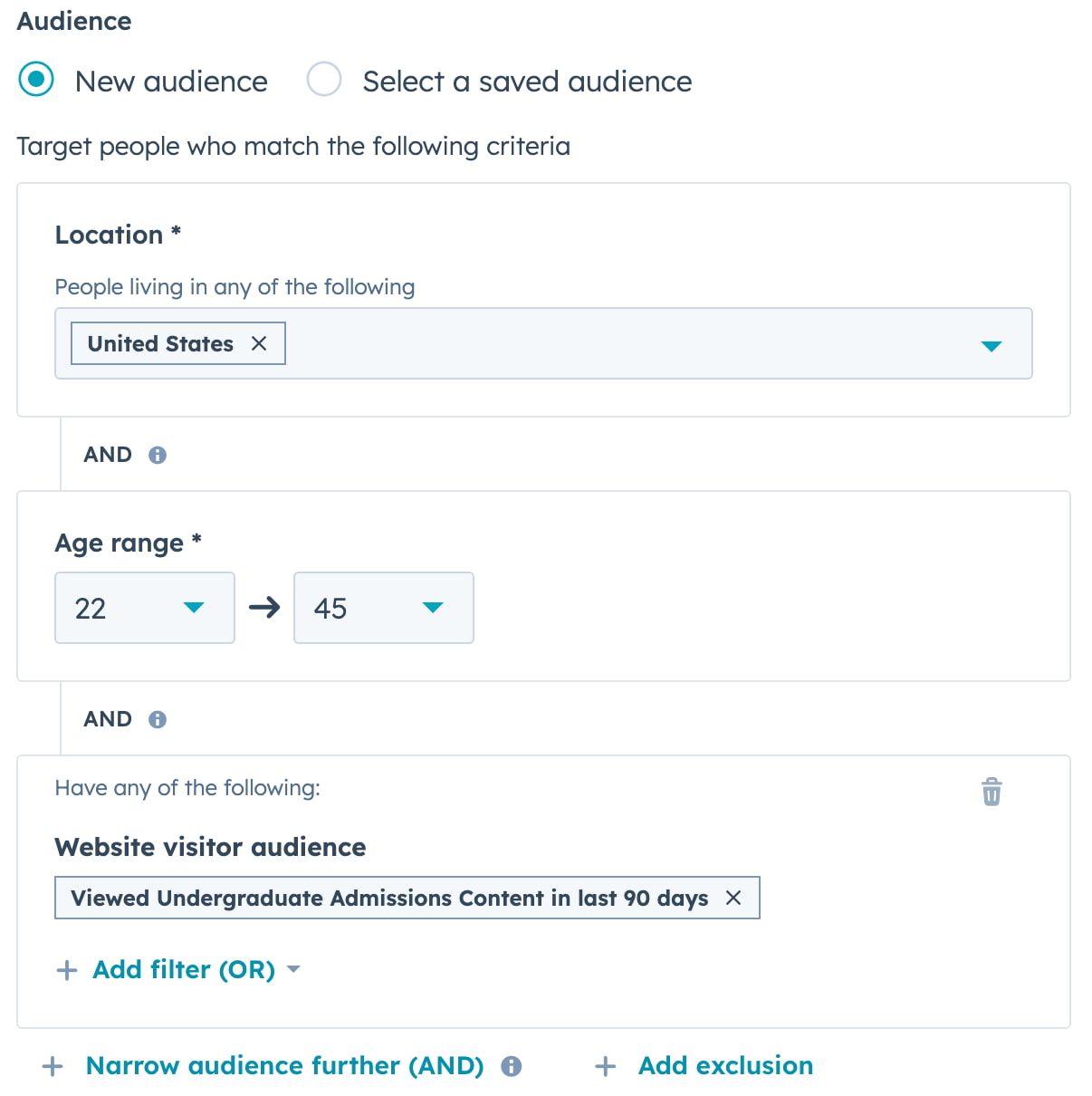
How To Leverage Lead Generation Ads
This platform is an excellent lead-generation tool to promote upcoming admissions events or relevant content that requires users to fill out a form. Furthermore, on Facebook and Instagram, you can create forms within the platforms that allow individuals to convert within each app.
Since these campaigns are collecting prospective students’ contact information, it’s crucial to make sure this process is integrated into your customer relationship management (CRM) platform. HubSpot is an excellent CRM for this purpose because it offers a seamless integration with lead gen forms, allowing you to enroll contacts into existing workflows.
To ensure success though, it’s important to consider relevance in these lead generation ads. Your offer must be appropriate for your target audience and speak to them on a more personal level.
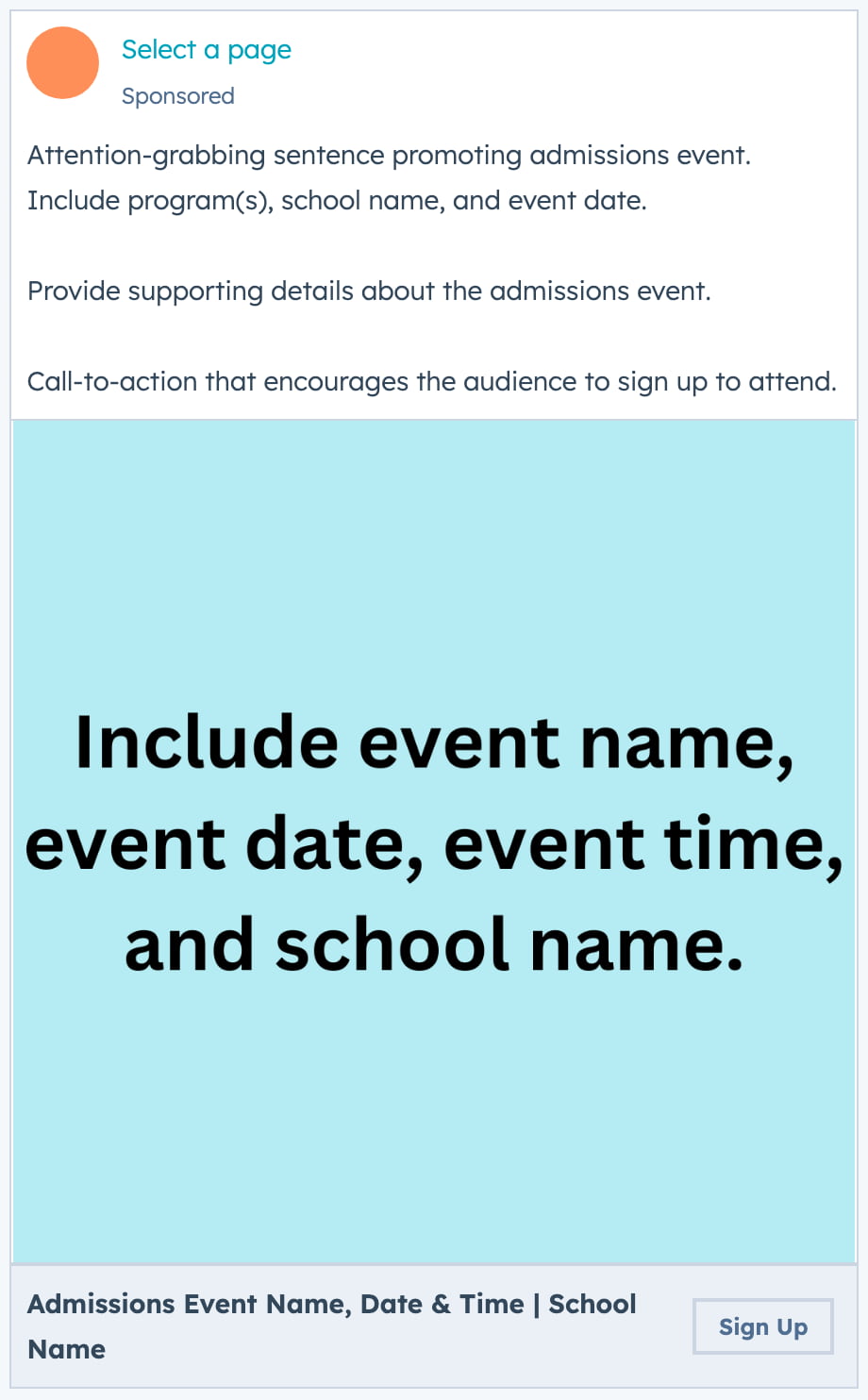
Paid Social Budget and Campaign Metrics
It's best practice to set up your campaign with a preliminary budget to gain insight to the cost-per-conversion, cost-per-acquisition, cost-per-click, and the frequency users in your list are being served your ads. You’ll want to track these actions by deploying a Facebook tracking pixel on your website and by using lead gen forms through Facebook Business Manager. Once you have this information you can make an educated decision about your paid social audiences and how to appropriately scale the budget up to meet your admissions needs.
Since the primary goal for paid search ads is to gain new qualified prospective students, you’ll want to use CPA as your primary conversion metric. You’ll also want to review form submissions and newly created contacts in your CRM. Reviewing your existing data and past efforts can help you determine the likelihood that a website visitor becomes a new lead organically or through retargeting campaigns.
If you have a longer timeline with the goal to build your audience and reconnect with your school’s most qualified audiences, using paid social is a great choice.
Ready To Start Advertising?
This only scratches the surface of paid media. There are many platforms you can use for advertising purposes, as well as multiple types of advertisements you can serve them. While you’re developing your paid media campaigns you’ll want to ensure that you have high-converting landing pages in place.
To help with this, we encourage you to download our free downloadable checklist to identify the exact landing page optimizations that will increase your landing page conversion rate.


